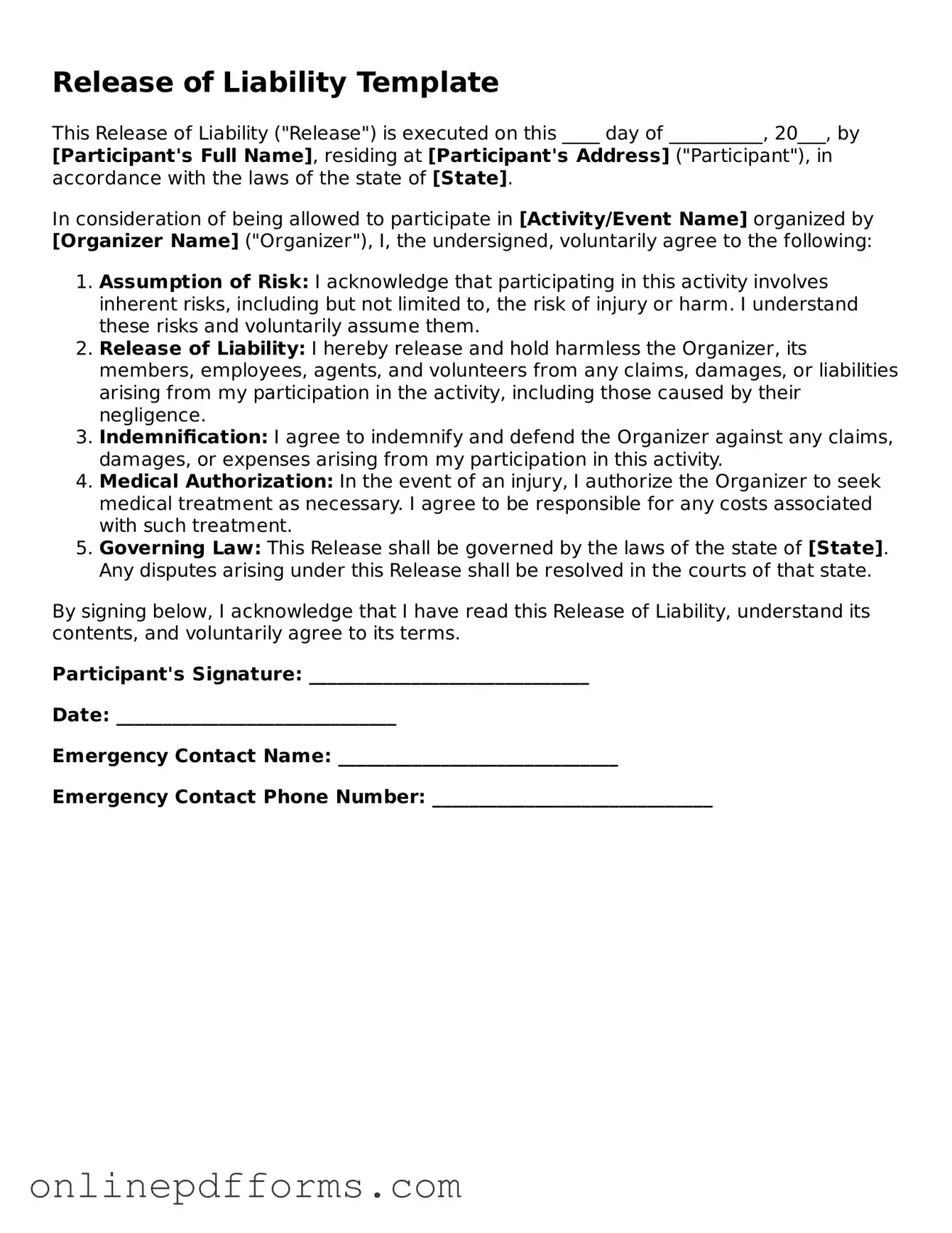A waiver is a document that allows an individual to voluntarily give up their right to pursue legal claims against another party. Like a Release of Liability form, a waiver typically involves a participant acknowledging the risks associated with an activity. Both documents aim to protect the party offering the activity from potential lawsuits, but waivers often focus on specific risks associated with a particular event or service.
An indemnity agreement is another document that shares similarities with a Release of Liability form. In this case, one party agrees to compensate the other for any losses or damages incurred. While a Release of Liability form primarily protects against claims made by participants, an indemnity agreement can extend to cover damages caused by third parties, offering broader protection for the entity at risk.
Non-disclosure agreements (NDAs) are designed to protect confidential information shared between parties. While not directly related to liability, NDAs share a common goal of limiting exposure to risk. Both NDAs and Release of Liability forms establish boundaries and expectations, ensuring that sensitive information or potential claims remain protected.
A hold harmless agreement is similar to a Release of Liability form in that it protects one party from legal liability. This type of agreement requires one party to accept responsibility for any claims or damages that may arise. While a Release of Liability form is focused on participants waiving their rights, a hold harmless agreement often involves a broader scope of liability protection.
Insurance waivers are documents that individuals may sign to acknowledge that they are aware of the risks involved in an activity and that they may not be covered by insurance. Similar to a Release of Liability form, these waivers help protect organizations from liability claims. Both documents serve to inform participants about the risks while limiting the organization’s exposure to lawsuits.
A disclaimer is a statement that aims to limit liability for certain actions or products. It serves as a warning to individuals about the potential risks involved. While a Release of Liability form requires participants to acknowledge and accept risks, a disclaimer often provides information about those risks in a more general manner, without requiring a formal agreement.
Release forms for minors are documents that parents or guardians must sign to allow their children to participate in activities. Like a standard Release of Liability form, these documents inform participants of the risks and protect the organization from legal claims. However, they specifically address the unique considerations involved when minors are participating in activities.
Finally, a participation agreement is a document that outlines the terms and conditions of an individual's involvement in an event or activity. Similar to a Release of Liability form, this agreement often includes clauses that limit liability and inform participants of the risks. Participation agreements help ensure that all parties understand their responsibilities and the potential consequences of their involvement.
